
Asteroids is a space-themed multidirectional shooter arcade video game designed by Lyle Rains and Ed Logg released in November 1979 by Atari, Inc. The player controls a single spaceship in an asteroid field which is periodically traversed by flying saucers. The object of the game is to shoot and destroy the asteroids and saucers, while not colliding with either, or being hit by the saucers' counter-fire. The game becomes harder as the number of asteroids increases.

Zaxxon is a scrolling shooter developed and released by Sega as an arcade video game in 1982. The player pilots a ship through heavily defended space fortresses. Japanese electronics company Ikegami Tsushinki was also involved in the game's development.

Centipede is a 1981 fixed shooter arcade video game developed and published by Atari, Inc. Designed by Dona Bailey and Ed Logg, it was one of the most commercially successful games from the golden age of arcade video games and one of the first with a significant female player base. The primary objective is to shoot all the segments of a centipede that winds down the playing field. An arcade sequel, Millipede, followed in 1982.
1980 saw the release of a number of games with influential concepts, including Pac-Man, Battlezone, Crazy Climber, Mystery House, Missile Command, Phoenix, Rally-X, Space Panic, Stratovox, Zork, Adventure, and Olympic Decathlon. The year's highest-grossing video game was Namco's arcade game Pac-Man, while the best-selling home system was Nintendo's Game & Watch. The Atari VCS also grew in popularity with a port of Space Invaders and support from new third-party developer Activision.
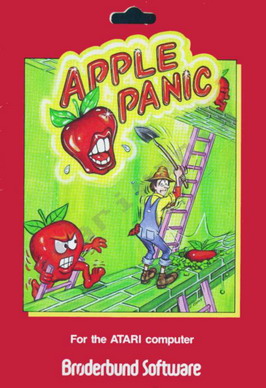
Apple Panic is a game for the Apple II programmed by Ben Serki and published by Broderbund Software in 1981. Apple Panic is an unauthorized version of the 1980 arcade game Space Panic, the first game with ladders and platforms. While the arcade original remained obscure, Apple Panic became a top seller for home computers. It was ported to the Atari 8-bit computers, VIC-20, IBM PC, and TRS-80.
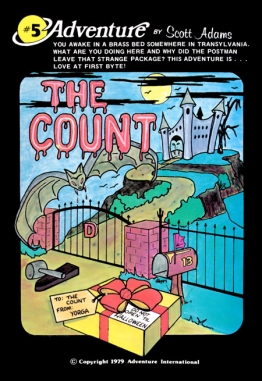
The Count is a text adventure written by Scott Adams and published by Adventure International in 1979. The player character has been sent to defeat the vampire Count Dracula by the local Transylvanian villagers, and must obtain and use items from around the vampire's castle in order to defeat him.
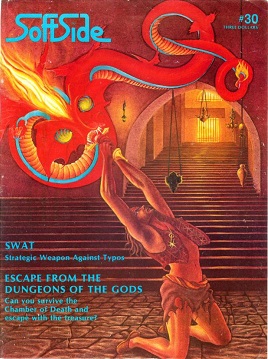
SoftSide is a defunct computer magazine, begun in October 1978 by Roger Robitaille and published by SoftSide Publications of Milford, New Hampshire.

RoboCop is a beat 'em up / run and gun video game developed and published by Data East for arcades in 1988 based on the 1987 film of the same name. It was sub-licensed to Data East by Ocean Software, who obtained the rights from Orion Pictures at the script stage. Data East and Ocean Software subsequently adapted the arcade game for home computers.

Rear Guard is a horizontally scrolling shooter written for Atari 8-bit computers and published in December 1981 by Adventure International. Neil Larimer created the game with assistance from Sparky Starks. It was ported to the Apple II, TRS-80, and TRS-80 Color Computer.

Planet Miners is a game published by the Microcomputer Games division of Avalon Hill for the TRS-80 Level II microcomputer in 1980. It was ported to the Atari 8-bit computers, Apple II, and Commodore PET. The game is written in BASIC.
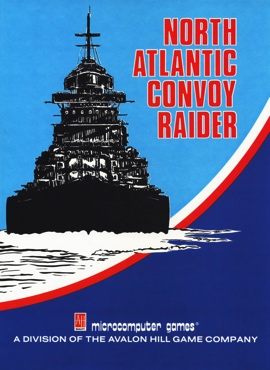
North Atlantic Convoy Raider is a wargame published by Microcomputer Games for TRS-80, Commodore PET, and Apple II in 1980. An Atari 8-bit family version was released in 1981.

Computer Acquire is a 1980 video game published by Avalon Hill for the Apple II, Atari 8-bit family, Commodore PET, and TRS-80.

Empire of the Over-Mind is an interactive fiction game written by Gary Bedrosian and published by Avalon Hill for the Apple II, Atari 8-bit computers, and TRS-80 in 1981. A version with an enhanced display for IBM PC compatibles by Bedrosian was published in 1986.

Robot Attack is a clone of the arcade game Berzerk written by Bill Hogue and Jeff Konyu for the TRS-80 and published by Big Five Software in 1981. It was the first game from Big Five to include speech.
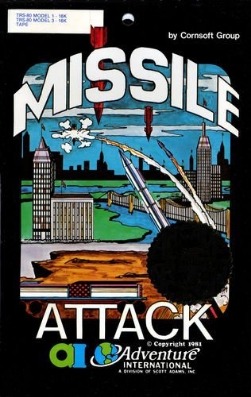
Missile Attack is a clone of Atari, Inc.'s Missile Command arcade game. It was developed by Cornsoft Group and published in 1980 by Adventure International for the TRS-80 and Apple II.

Galaxy is a 1981 video game published by Avalon Hill and developed by Microcomputer Games for the Apple II, TRS-80, Atari 8-bit computers, Commodore PET, Commodore 64, IBM PC compatibles, FM-7, and TI-99/4A. It was originally published as Galactic Empires by Powersoft in 1979.
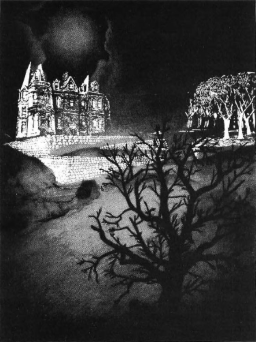
Windsloe Mansion is a text adventure published by Adventure of the Month Club for the Apple II, Atari 8-bit computers, and TRS-80. It was the January 1982 Adventure of the Month.
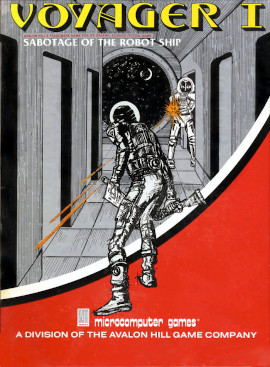
Voyager I: Sabotage of the Robot Ship is a computer game designed and programmed by William D. Volk, and published by the Microcomputer Games division of Avalon Hill. It was originally released for the Apple II in 1981, with later versions for the Atari 8-bit computers, TRS-80 Color Computer, TRS-80, and Commodore PET.

Planetoids is a clone of Atari, Inc.'s Asteroids arcade game published by Adventure International for the Apple II in 1980 and TRS-80 in 1981. Each was originally an independently sold game, neither of which was titled Planetoids. The Apple II version, written by Marc Goodman, was published as Asteroid. The TRS-80 game was written by Greg Hassett as Fasteroids by Adventure Works. Fasteroids was still sold by Adventure Works at the same time Planetoids was available through Adventure International. The TRS-80 version includes features not present on the Apple II or arcade original.


















